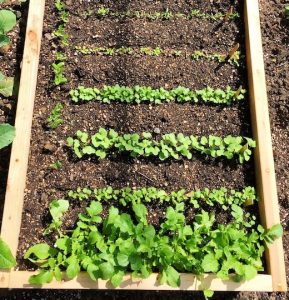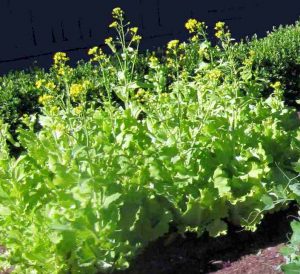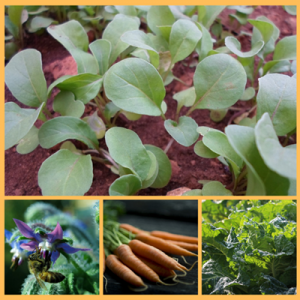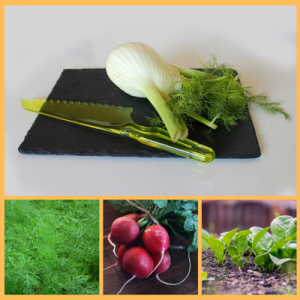by Ken Lain, the mountain gardener
- Easiest to Grow self-sowing vegetable plants
- Self-sower Vegetables for early spring gardens

When adding and “turning in” some Barnyard Manure, the ideal soil amendments, and plant nutrients for the perfect garden soil, have you ever wished the garden would merely “come back” by itself? Succession planting is one easy, easy way to have a continual harvest; simply plant short rows of your vegetables every 2-3 weeks. But, planting self-sowing vegetables is an even easier way to have early spring vegetables replant themselves in the garden.

Early spring vegetables that bolt are often
looked at as a bad thing.
If a plant isn’t harvested often enough, it
can go far beyond a flavorful harvest quality to an unpalatable bitter or
spicy. So a natural inclination is to rip these plants out of the garden and
plant something else in their places. If you have enough garden and space,
resist that temptation and let the seeds ripen and drop, and the plants
automatically will succession-plant
themselves!
The weather dictates when plants go to seed. If temperatures soar before early
spring crops have time to grow, vegetables like spinach, lettuce, and corn
salad give up and bolt into seed stalks. Biennial crops like broccoli and kale
that experience a sudden dip in temperatures may think they’ve gone through
winter and are entering their second growing season, and go directly to seed.
The weather controls much of our gardening, and when plants bolt into seed,
it’s merely within their nature; it eventually happens to all plants.
Controlling Self-Sowing Vegetables – Vegetables left to themselves go to seed as soon as possible, especially leafy crops like lettuce, kale, and herbs. Being harvested delays seed production. When their leaves are heavily harvested plants focus on regrowing new leaves rather than seeds.
Get plants to come up in other garden spaces by waiting until the seeds have dried and are ready to drop. Scatter the seeds or cut off the entire seed head and toss it onto a new garden space.
Self-sown plants are not good at
Bottom line is, if you allow some randomness and serendipity in your garden, you’re apt to be pleasantly rewarded.
Early spring vegetables best left to bolt, seed, and self-sow for summer or fall include:

Arugula is one of the first vegetables of spring. It tries to go to seed quickly, as soon as the temperatures begin to warm. You can keep it growing longer by planting taller plants on its south side to provide shade.
B
Carrots can have a long growing season so not everyone will have enough time to
Collards can be large plants, and you may not have the room to let one idle until it drops its seeds, but if you do, go for it.

Fennel likes to re-seed, especially leafy fennel. Like carrots and dill, fennel has flowers
that beneficial insects can’t resist.
You may want to harvest every last fennel seed, but allow a few to
re-seed and you’ll be endowed with fresh, new plants.
Lettuce will continue growing throughout the summer if given plenty of
water. Sooner or later a plant or two or
three will manage to bolt. If not pulled
out too soon, most varieties of lettuce are only too happy to self-sow.
Radishes need to reproduce, or they become woody or unpleasantly hot.
Most gardeners lose a few radishes to bolting and quickly pull them out. If you
let the seeds fall, you will get volunteers, but you will need to keep them
cool with plenty of water or they will become unpleasantly spicy hot!
Spinach plants are one of the fastest to go to seed. If spring is long
and cool, edible volunteers could appear right away. Most years, we have to wait until fall for temperatures to
cool down enough to see new plants emerging.
Until next issue, I’ll be here at Watters Garden Center helping local gardeners with their vegetable gardens.
Ken can be found throughout the week at Watters Garden Center, 1815 W. Iron Springs Rd in Prescott, or contacted through his web site at WattersGardenCenter.com or FB.com/WattersGardenCenter .

